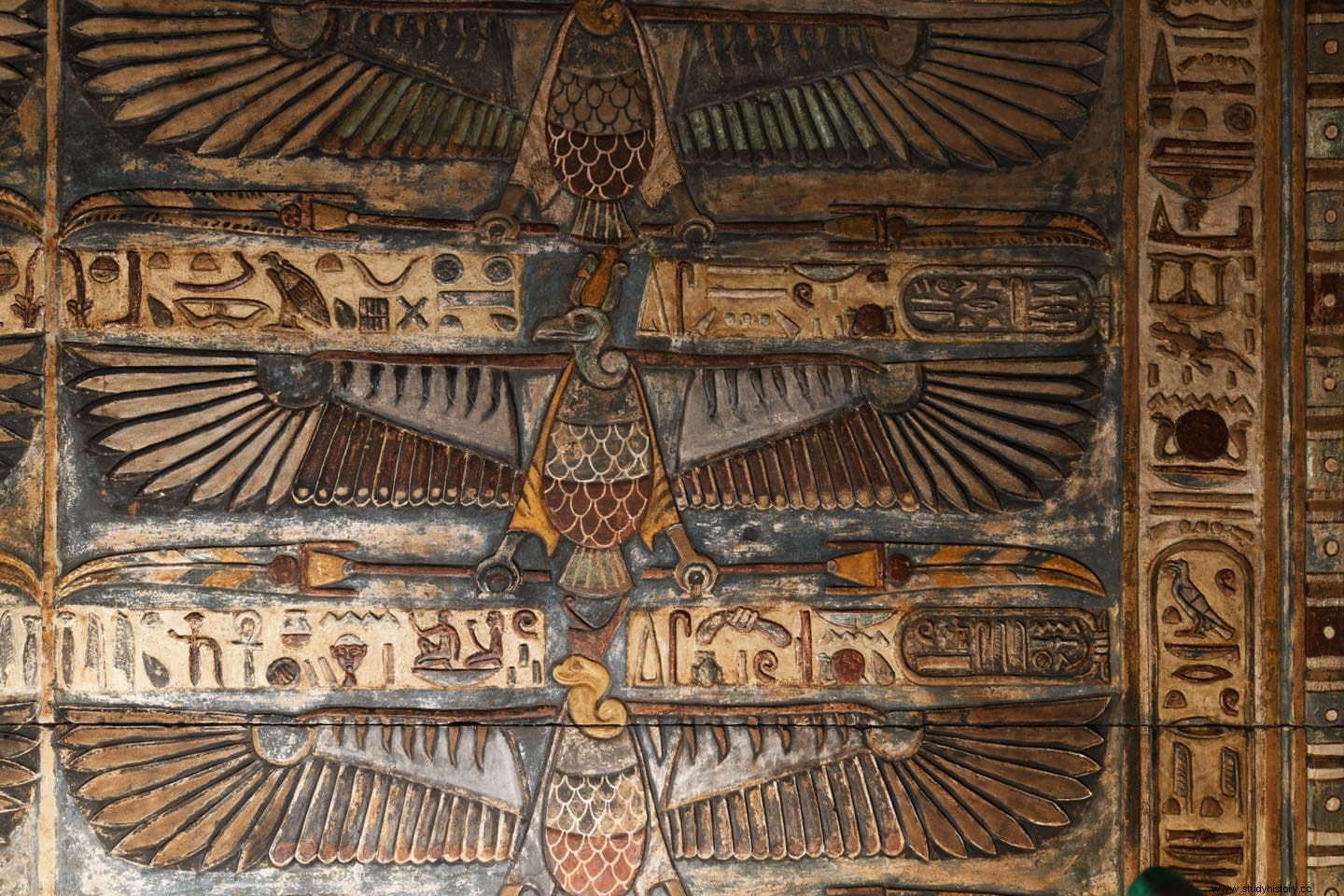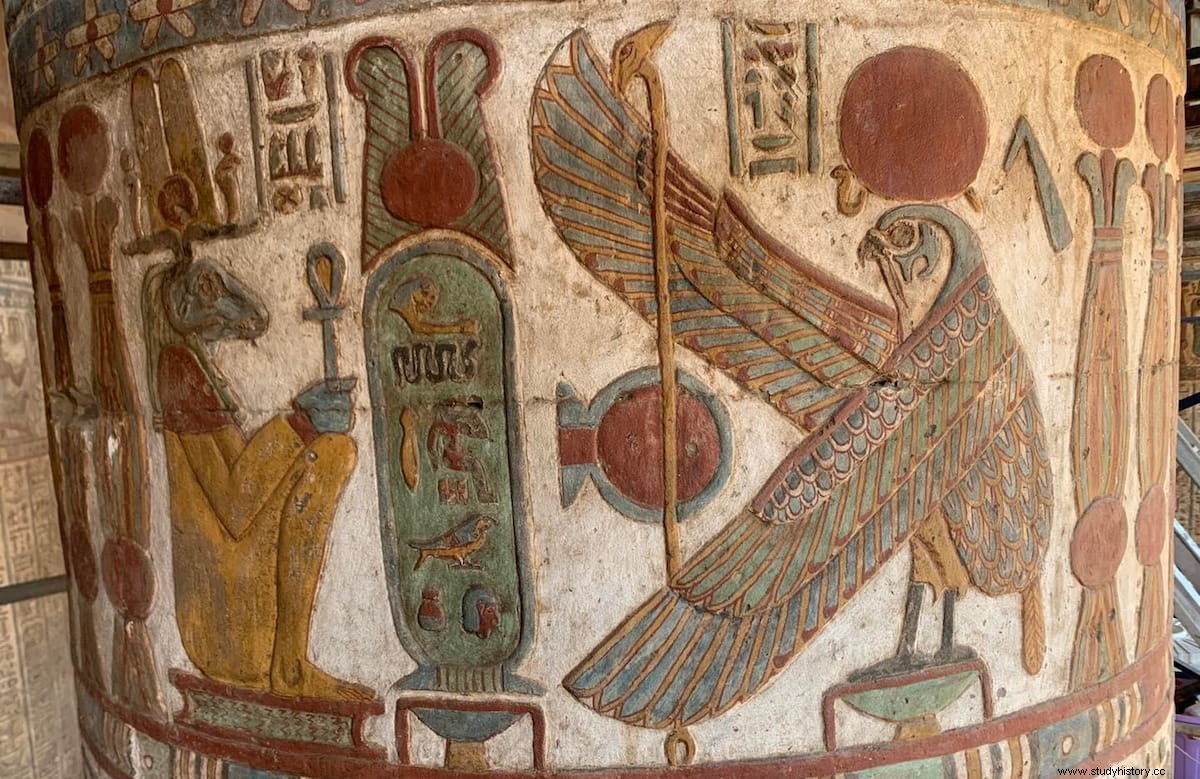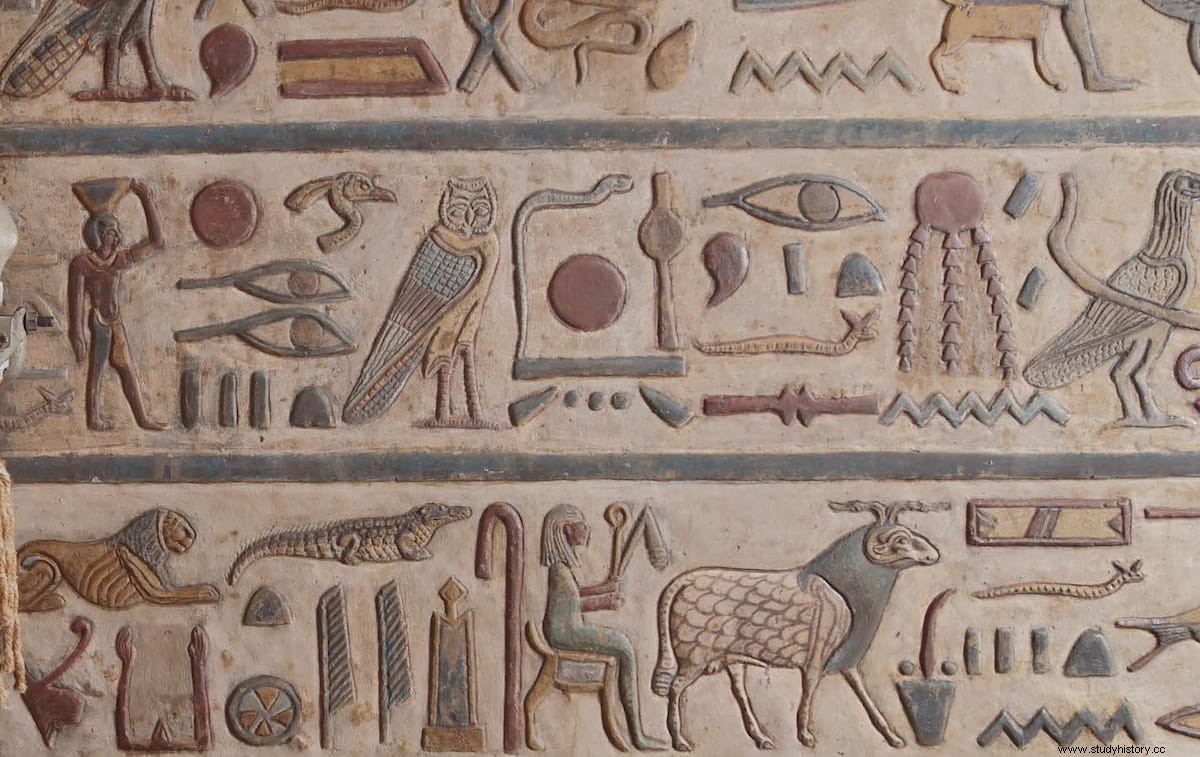The joint Egyptian-German archaeological mission working on the Temple of Esna succeeded in revealing the inscriptions, images and colors on the temple's ceilings and walls, after completing its clean-up work as part of the temple's restoration project.
Mustafa Waziri, secretary general of the Supreme Council of Antiquities, explained that the works resulted in the recovery of the original inscriptions and bright colors of the decoration located below the middle ceiling above the entrance to the temple, at a height of about 14 meters. /P>
Dating from Ptolemaic times, the Esna temple was dedicated to the triad of Khnum (the creator god of the primordial egg from which the light that gave life to the world emerged) and his consorts Neit and Satis, as well as his son Heka.

According to the inscriptions engraved on the walls of the temple, all who entered it were required to cut their fingernails and toenails, shave off all body hair, wash their hands with natron (a naturally occurring salt), and dress in linen. (wool was prohibited), as well as having abstained from intercourse for several days prior.
The Khnum temple stands out for the beauty of its location and the magnificence of its architecture, built with red sandstone. Its portico consisted of six rows of four columns each, with capitals of lotus leaves, all of them different from each other.

The work revealed a painting that until now had not appeared in any scientific publication, nor in the registry of inscriptions made by the Egyptologist Serge Sonron between 1963 and 1975. It represents 46 vultures in a row, 24 representing Nejbet (the protective goddess of the Upper Egypt) and 22 with a cobra head representing Wadjet (the goddess of Lower Egypt).
Dr. Hisham El-Leithi, head of the Central Administration for the Registration of Egyptian Antiquities and head of the archaeological mission on the Egyptian side, added that the temple's colorful inscriptions had suffered in recent centuries from the accumulation of thick layers of soot. , dust and dirt, as well as the remains of birds and bats, spider nests, as well as salt calcifications, which accumulated over almost 2000 years.
This necessitated the development of a temple restoration and cleaning project to preserve and recover its unique inscriptions, and to preserve a unique monument from Ptolemaic and Roman times, for which funding was provided by the American Research Center in Egypt.

For his part, Ahmed Imam, director of the restoration team, said that while cleaning the frieze on the western wall in the axis of the temple, the restoration team found a Greek inscription made with red ink that was completely covered in black soot, and that was not known until now.
Initial analyzes of this text suggest that it dates back to the time of Emperor Domitian (AD 81-96), as the inscription records the day and eleventh month of the ancient Egyptian and Coptic calendars (EPIPHI 5), which probably corresponds to to the time the temple was completed.
The latest inscription found in the temple dates from the time of Emperor Decius, between 249 and 251 AD

